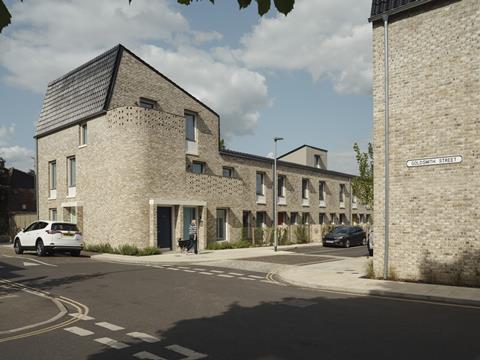Report says build forecast for local authorities might be exceeded – but obstacles remain
The government’s forecast for councils to build 10,000 new homes a year is likely to be met or even exceeded, according to a report launched today by a coalition of housing interest groups.

The report, which surveyed 22 local authorities of differing types, found that these councils alone were planning to build 3,000 homes per year over the next five years. This means that 10,000 homes per year is definitely possible across all 326 councils “even allowing for considerable slippage in councils’ plans and the fact that a minority of councils … may not be planning any new build at all”.
The report, published by the Chartered Institute of Housing (CIH), the National Federation of ALMOs and the Association of Retained Council Housing, said that “the planned output from councils who responded suggests that government forecasts might even be exceeded”.
The report was commissioned to look at how councils had responded to the government’s decision to remove the cap limiting councils from borrowing against their rental income, known as the Housing Revenue Account.
However, despite the positive response, the report found that significant barriers remained that were slowing council attempts to revive significant building programmes.
These included: the lack of a stable, ten-year rent policy; the requirement under Right to Buy to allow tenants to buy their homes at a significant discount; the need for more, and more certain, grant funding; the availability of land; and the capacity of the building industry to deliver as many homes as councils and ALMOs want to build.
Report author John Perry said: “Councils and ALMOs are ready and willing to take-on long-term investment programmes, but stability is vital: there needs to be a consistent approach to rents policy and no wider policy changes that would compromise the major commitments which councils are now taking on.
Chloe Fletcher, policy director at the National Federation of ALMOs said: “The lifting of the HRA debt cap was fantastic news for the sector and a very necessary reform of the system, but it is not enough on its own. Finding land on which councils can afford to build is a huge concern, as is the current right-to-buy regime which both depletes housing stock and siphons public money out of the system.
CIH chief executive Gavin Smart said the report showed councils were stepping up to the challenge of building more homes, but that a combination of factors was stopping them doing more. “If the government wants councils to play their full part, it needs to take on board the points raised in this report and give councils the flexibility they need to really get building the homes their communities need,” he said.











No comments yet